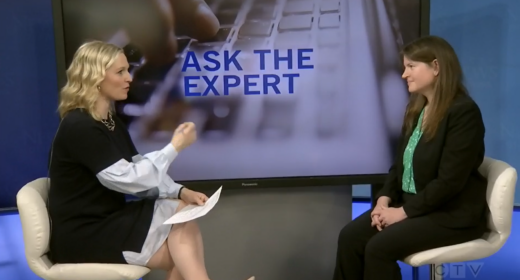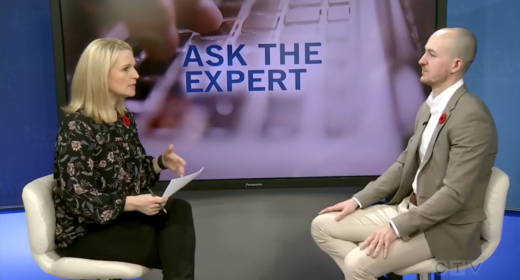Not long after releasing its proposal for customized automobile insurance coverage, the Ontario Government has signalled its intention to effect changes within the next several months.
Unlike the widespread debate over capping insurance premiums, the plan for customized insurance coverage has gone largely unnoticed. If implemented, the changes could have significant impact on the crucial benefits an injured driver could claim following an accident.
According to the proposal released in July 2004, customized policies are the next step in the battle against rising premiums.
The intent is to allow drivers to purchase more or fewer accident benefits depending on their particular circumstances and insurance needs.
Of particular interest are the three optional "buy down" bundles: the "no income replacement bundle", the "no dependants bundle" and the "no minor losses coverage".
Each package would exclude coverage based on the election made by the driver. For instance, a driver who has employment benefits or other forms of collateral insurance might choose to eliminate duplicate benefits like income replacement offered by an automobile policy.
Likewise, a driver who doesn't have access to collateral benefits could elect to purchase a higher level of income replacement than that currently offered under the standard auto policy.
At first blush, this harmonization of accident benefits and collateral insurance would certainly be a welcome relief to those who are paying for duplicate services and coverage. Similarly, giving the consumer more choice over their insurance coverage may result in lower premiums. But at what cost?
In its response to the government's plan, the Insurance Bureau of Canada commissioned Baron Actuarial Services to review the proposed changes and comment on any resulting premium reductions. Its conclusion was that the overall number of claims made in Ontario would remain unchanged, but the number of individuals left to fund those benefits would be significantly reduced. This perverse result, according to the IBC, would occur because our current system of benefits coverage requires an injured driver to exhaust their collateral insurance before claiming under their automobile policy.
In other words, drivers with collateral benefits do not represent the majority of those claiming for accident benefits under automobile policies. If those drivers with collateral benefits can opt out, the only impact would be to transfer their share of the cost to those remaining drivers in the system.
Not surprisingly, this would result in higher premiums for most, with a fortunate few let off the hook.
That, of course, highlights another significant problem with the proposal. It assumes that consumers will base their coverage decisions on a logical view of their insurance needs. In reality, it is easy to imagine many consumers simply opting out of certain benefits to obtain a lower premium without considering the long term consequences of that decision.
Consider for instance the hypothetical driver who "buys down" and elects the "no income replacement benefit" without obtaining disability insurance through another source. It can be expected that, in the event of injury, that driver will simply attempt to bring their claim within the four corners of the mandatory nonearner benefit.
In that scenario, the hypothetical driver will have succeeded in reducing the cost of the insurance premium without having given up access to the benefit. All that will have been affected is a change of labels: non-earner benefits for income replacement benefits. The result would be an insurance industry coping with the same number of claims but with fewer resources available to fund the system.
The alternative would be to modify the test for the nonearner benefit in the hope of preventing additional claims by those who voluntarily elected to opt out of paying the higher income replacement premium.
However, in that scenario, if the hypothetical driver is left unable to return to their preaccident employment but is able to carry on a normal life, no benefit would be triggered and then the driver's financial problems become society's problem.
The outcome of such bad choices and irrational planning might be to cast the province back to an era where injured drivers find themselves without benefits straining the government purse and social safety net.
Clearly, the well intentioned notion of allowing drivers to eliminate duplicate coverage must be coupled with a "checks and balance" system of protecting the taxpayer from the irrational behaviour of the consumer.
Lastly, safeguards would need to be implemented to ensure that the decision to eliminate certain benefits didn't result in a further burden on the tort regime. For instance, in the absence of an income replacement benefit, there would be a strong inclination to find an alternative funding source for the economic loss.
Inevitably, if faced with a seriously injured client who unwittingly (or intentionally) cut their coverage, the creative tort lawyer would seek to recover the lost funding from the pocket of the at-fault insurer. While that is a perfectly logical choice, the
result would be to undermine the delicate balance struck by the current hybrid-no-fault system.
Overall, the idea of customizing insurance coverage is long overdue. Nevertheless, the risk of implementing the proposed changes without considering the real economic choices made by the consumer might lead to increased premiums or worse, drivers with inadequate insurance coverage.
Those problems become the profession's problems when the seriously injured client has to be told that they do not have access to the necessary benefits. Whatever changes are made, we can only hope that the cure is not worse than the disease.
[This article is reprinted with permission and first appeared in the October 2004 issue of The Lawyers Weekly. Author: Joseph Griffiths]


